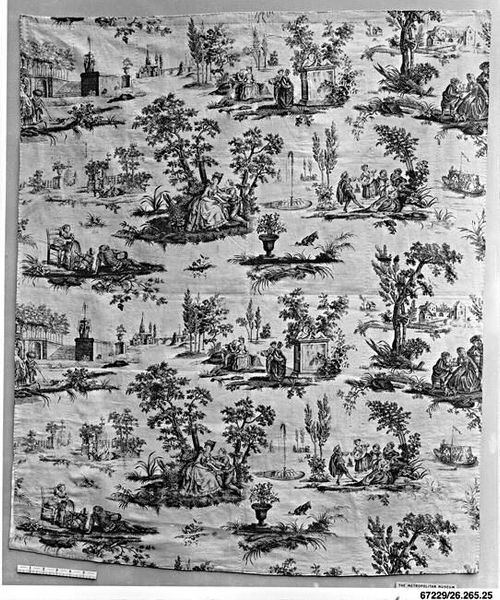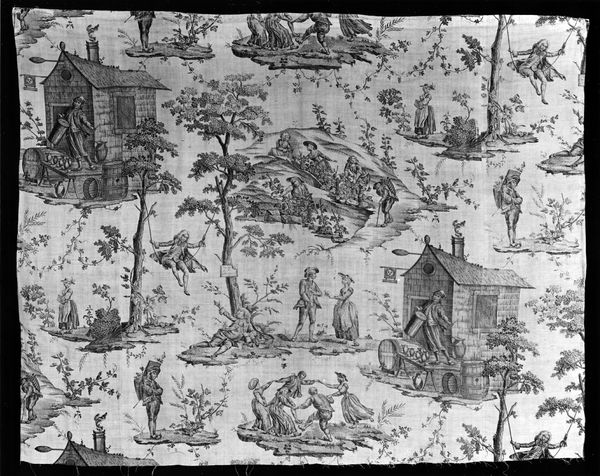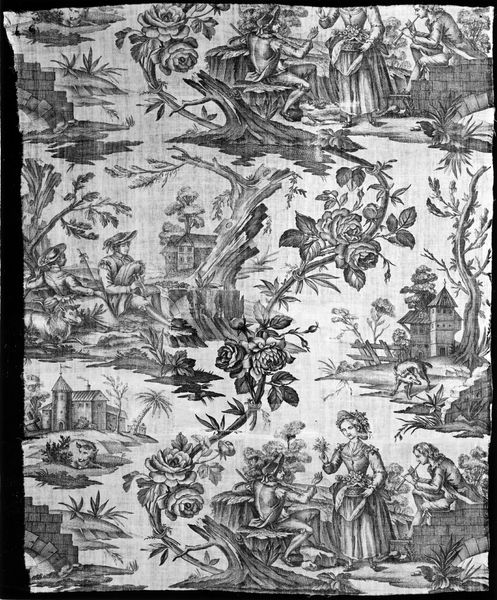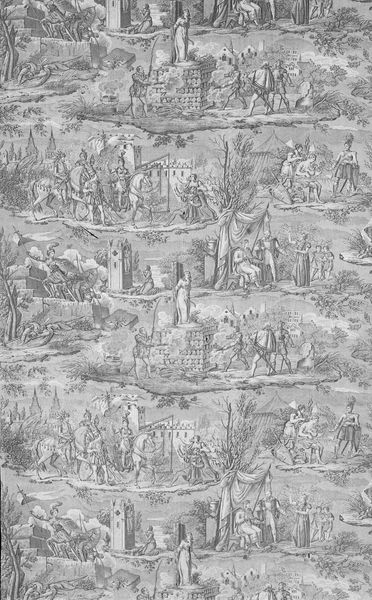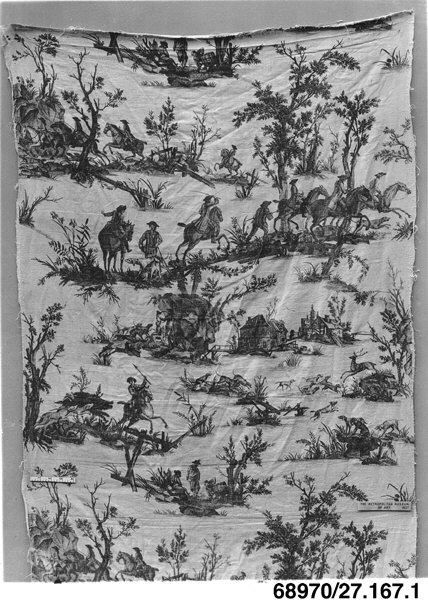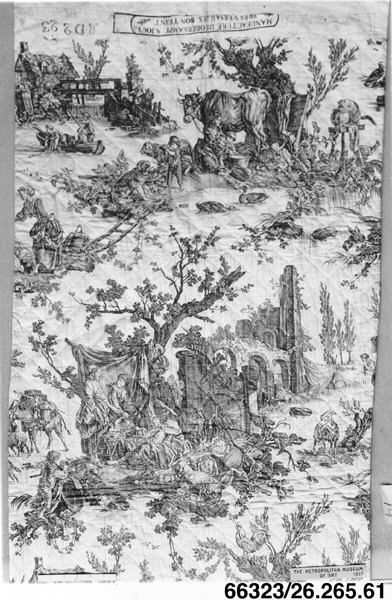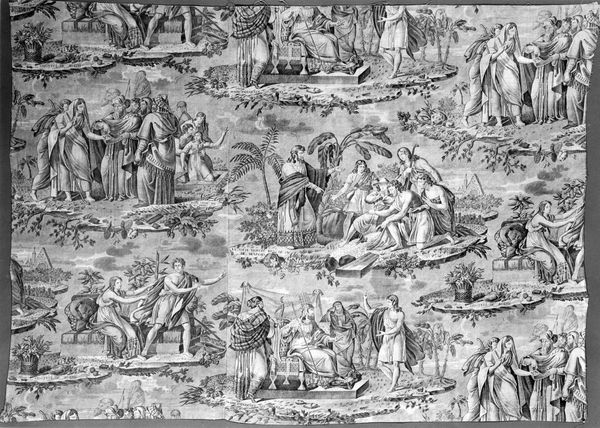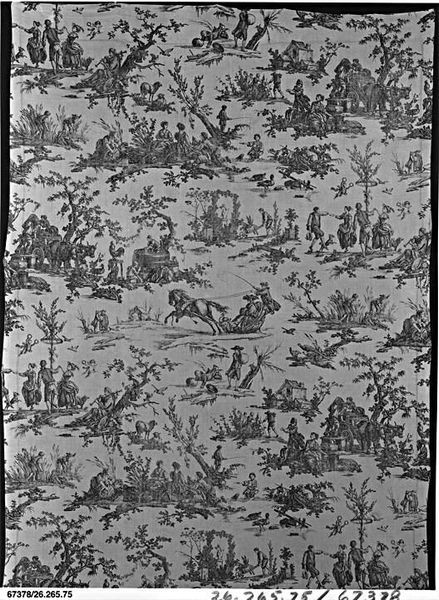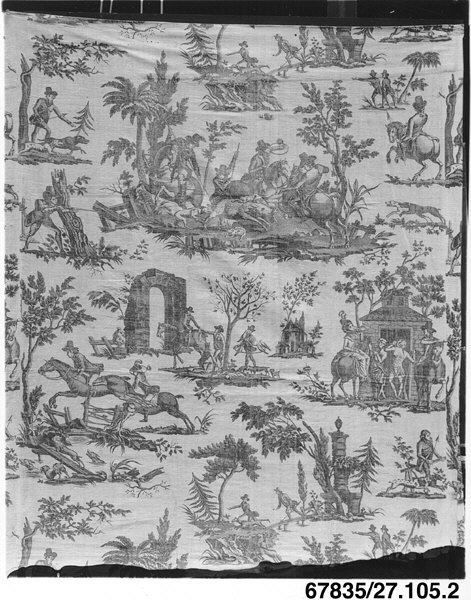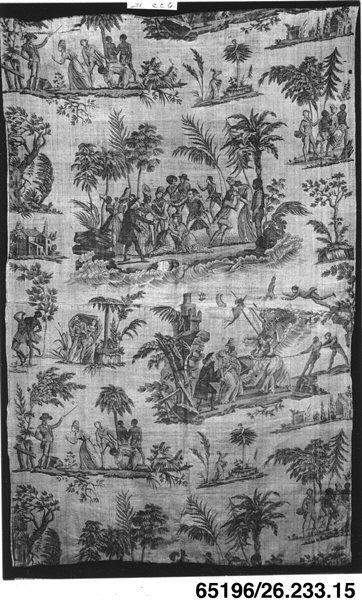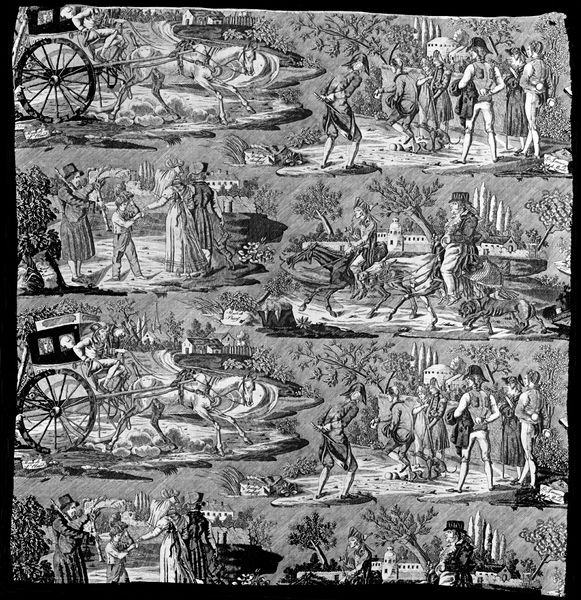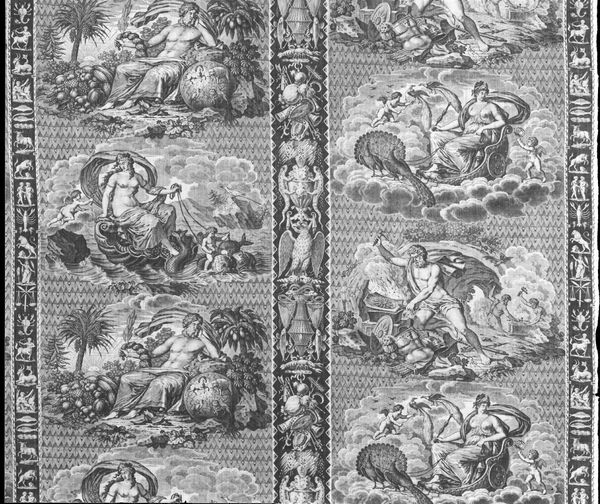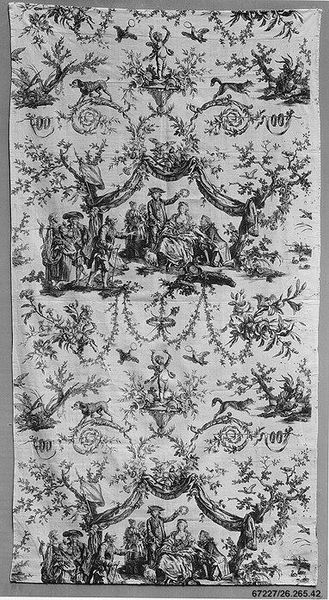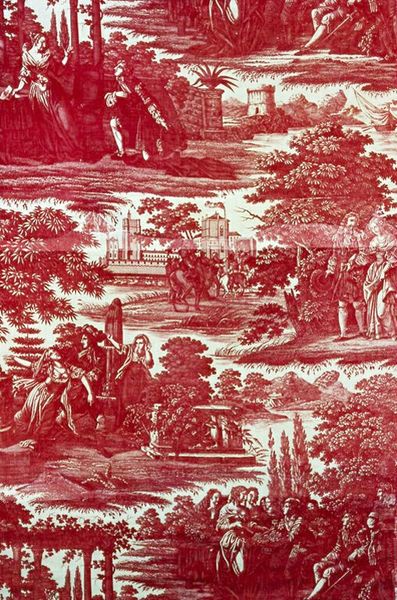
La Chasse à Rouen (Hunting at Rouen) (Furnishing Fabric) 1840
0:00
0:00
print, weaving, textile
#
animal
# print
#
carving
#
dog
#
weaving
#
landscape
#
textile
#
text
#
romanticism
#
genre-painting
#
history-painting
Dimensions: 93.8 × 80.5 cm (36 7/8 × 31 5/8 in.) Warp repeat: 48.6 cm (19 1/8 in.)
Copyright: Public Domain
Editor: This furnishing fabric, "La Chasse à Rouen," or "Hunting at Rouen," created in 1840 by Horace Vernet, is fascinating. It’s a monochrome print depicting a hunting scene and gives a glimpse into 19th-century leisure. How do we unpack this work beyond its surface appeal? Curator: It's tempting to view this purely through a romantic lens, but we must consider its inherent politics. Vernet was celebrated and favored, yet also a propagandist. How does this tapestry reflect or perhaps sanitize, the realities of class, power, and land ownership during that time? Notice how the hunt appears almost pastoral, a leisure activity removed from the hard labor typically associated with the land. Editor: That's interesting. I hadn't thought about it in terms of propaganda. The idyllic representation definitely glosses over any potential social tensions. Does the repetitive nature of the print itself speak to mass consumption or a specific market? Curator: Absolutely. Think about furnishing fabrics: these weren't unique art objects meant for contemplation. They were designed for consumption, destined for drawing rooms. This piece served to decorate spaces, reinforce the values and status of the patrons. Consider what ideologies are woven into the fabric, so to speak. How does it normalize specific power dynamics related to gender and race in the landscape it depicts? Editor: It's sobering to consider the fabric itself as a carrier of cultural and political messaging. The seemingly harmless scene now appears loaded with the nuances of social stratification and historical context. Curator: Precisely. It forces us to confront how even decorative arts participate in broader narratives of power and identity, and to challenge what is left unseen.
Comments
No comments
Be the first to comment and join the conversation on the ultimate creative platform.
